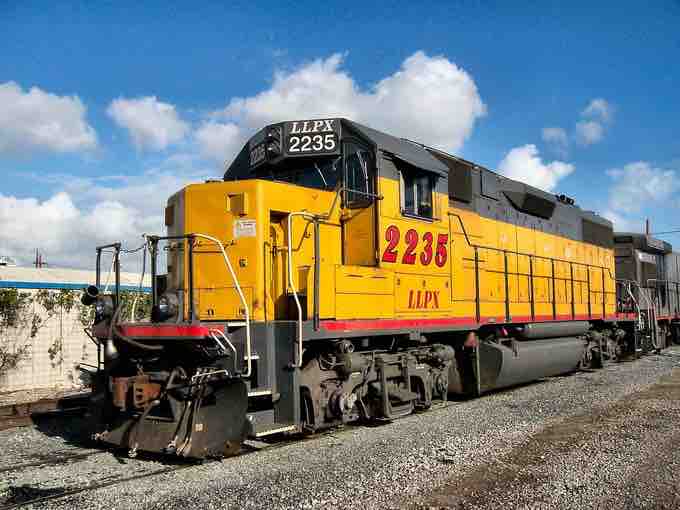Leasing
Leasing is a process by which a firm can obtain the use of certain fixed assets for which it must pay a series of contractual, periodic, or tax deductible payments. In business-to-business (B2B) transactions, leasing serves as an alternative method for customers looking to use high-priced products and services . For example, customers often lease software products. The process works similar to leasing a car, where customers pay a fee over time to use the technology without owning the equipment. At the end of the lease, the hardware is returned or purchased at a fair market price .

Leasing Sign
Leasing products is often a viable alternative for cash-strapped organizations.

Leased Locomotive
This locomotive is leased to the Union Pacific Railroad, hence the paint, but it was never owned by them. The locomotive is actually an ex-Long Island Railroad unit.
Benefits Of Leasing
One of the major benefits of leasing is the ability for organizations to quickly take advantage of new products available on the market. Organizations such as schools and universities, which often rely on bonds to fund new hardware and software purchases, frequently take advantage of leasing programs. This keeps the hardware in schools current, and ensures that students are using the latest technology.
Business products also tend to depreciate quickly and have little value at the end of its life. Leasing allows organizations to avoid dealing with the depreciation of outdated products. When a piece of technology has reached the end of its life, the equipment is usually sent back to the vendor for disposal, saving the customer time and money. Organizations with smaller cash flows can also obtain technology at lower costs by leasing products rather than purchasing them.
Leasing can also help organizations manage their annual budgets. Depending on the organization, lease agreements are easier to administer and approve than purchasing agreements, since the cost of the equipment is spread out over the course of the lease. In contrast, organizational purchases require the availability of large sums of money within a single fiscal year. Leasing business products not only significantly reduces the length of the approval process for obtaining products, but makes it easier for organizations to balance their annual budget.
Additional advantages of B2B leasing agreements include flexible lease-to-own programs. A lease can be structured to allow the purchase of equipment at the end of the lease for fair market value of the hardware. Furthermore, lease agreements can be structured to include maintenance, installation, software, and other professional services. This can save the district time and money in the long run.
Potential Disadvantages Of Leasing
Without owning a product, organizations also lack full control over what can be done with the equipment. Whereas customers who purchase equipment wield influence over future product updates and modifications, leasing customers may have limited say in how products evolve for future releases.
Lease agreements are also set for a definite period of time, which locks organizations with certain vendors and equipment. If the needs of the lessee suddenly change, it might be difficult to modify the terms of the lease. However, some leases will allow product upgrades before the end of the lease.
In addition, lessees might not be able to return damaged products depending on the leasing conditions. Leasing terms sometimes include hidden fees and penalties at the conclusion of the lease, all of which can cost the organization extra money. Accounting and purchasing departments must be aware of both the pros and cons of the lease to avoid larger problems over the lifetime of the leasing contract.